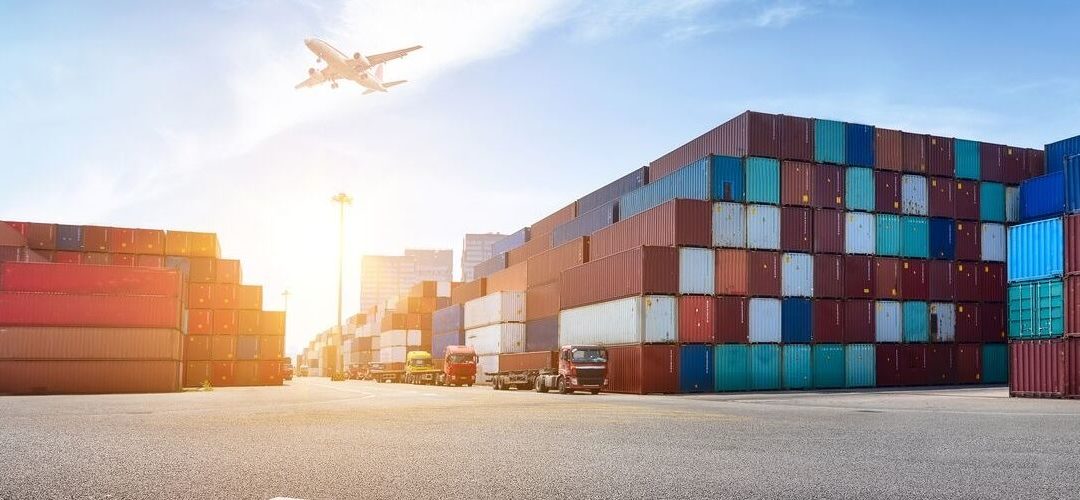A very well known buzzword ‘Internet of Things’ has become the next step in technological revolution. It’s about connectivity, optimization, smart management and much more. Because it is such a big phrase, it can be difficult to visualize what kind of solutions it might bring in a specific industry. That’s why we prepared these use cases in IoT transportation and logistics so help finding perfect solutions that you might not think about.
Related: All you need to know about IoT before starting your project
Table of Contents
- FLEET MANAGEMENT
- INVENTORY & WAREHOUSE MANAGEMENT
- SUPPLY CHAIN MANAGEMENT
- TRACK AND TRACE
- PREDICTIVE MAINTENANCE
- CUSTOMER ORDER AND DELIVERY TRACKING
- ALTERNATIVE DISTRIBUTION METHODS
Fleet Management
The first use case of IoT in transportation and logistics is fleet management. Thanks to sensors and devices embedded in the vehicles we can gather informations about condition of the vehicle, the amount of fuel or driver behaviour.
Monitoring the condition of important parts of vehicles like tire pressure, coolant level and so on can minimize the number of unexpected failures. Having real-time access to these data makes maintenance a lot easier and more effective.
This type of smart fleet management system is used by UPS. They developed a monitoring system that collects data from GPS and IoT sensors to minimize the number of fixes.
Internet of Things solutions in transportation can also be used to describe drivers behaviour. You can get access to information about the speed of a vehicle, time between stops or even driving habits (how the driver is using breaks etc.).
These data can help you teach your drivers how to drive more efficiently and use less fuel.
Another way to use IoT in logistics is by installing sensors and devices responsible for maintaining the right temperature and humidity conditions within the truck. It’s extremely important when transporting foods and medicines. Internet of Things gives us the advantage not only based on the real-time knowledge on the situation. Many devices control and correct the situation when it’s not meeting the standards.

Inventory and Warehouse Management
Another IoT solution in logistics is Warehouse Management System (WMS) or Inventory Management System. Implementing this type of solution will improve the overall warehouse performance.
It’s extremely important to manage the warehouse space efficiently in order to make the delivery of goods fast and easy. Moreover, using smart systems can also help you optimize your space and locate packages in the most optimal place.
Installing smart sensors in the warehouse can be a great way to automatically create orders when there’s little supply left. This can be a good way to manage limited space in the warehouse.
RFID tags are often used by companies to manage their products and warehouses. They automatically send informations to database when the product has left the warehouse.
Supply Chain Management
Before product gets to its final destination, it goes through a whole process of shipment. When millions of different goods are changing its locations at the same time, it’s difficult to manage them efficiently. Thanks to IoT sensors the whole process can be much more effective and error resistant.
IoT solutions in logistics can give real-time data on the location of goods, identify whether there was a theft or the shipment has been delayed.
From a sales point, it’s crucial to have access to the highly demanded products that sale quickly. Using Internet of Things in supply chain management can help manage demand and plan the amount of goods being produced, ordered and shipped efficiently. The whole process can be optimized to minimize costs and maximize profit.
For example, Volvo is using IoT technologies to order parts from different countries and ship vehicles to suppliers.
Track and Trace
Making sure the goods are in the right trucks, on the way to the right warehouses etc. is crucial in transportation and logistics. It also takes a lot of time and resources and is very error prone.
IoT sensors like RFID (radio-frequency identification) or AIDC (automatic identification and data capture) are great methods to track your goods and manage them properly.
RFID uses radio waves to determine the position of goods based on implemented microchips. These tags can transport informations not only about what the product is and where it is but also where it’s supposed to be shipped etc.
The biggest advantage of RFID over traditional scanning is that it is being done wirelessly. Moreover, data can be transported onto the database in real-time. So you can have access to informations from anywhere.
Decathlon is using RFID system to deliver their products to their stores in over 20 countries.

source: https://www.zetes.com/pl/technologie-i-materialy-eksploatacyjne/integracja-systemow-lancucha-dostaw
Predictive Maintenance
Machines are the key to every warehouse and every logistic center. That’s why predictive maintenance has become more and more popular. The regular way of maintenance planning is by the age of a machinery. It has been proven to not be an effective way since most of errors happens randomly.
Machine Learning allows searching for patterns and repetitive scenarios to predict issues. It collects previous and real-time data and processes them to identify possible future errors.
Predictive maintenance is a great way of using IoT in logistics. It helps to maintain the right condition of all devices and systems.
Related: Digital Twins – How Is It Changing Manufacturing Industry?
Customer Order and Delivery Tracking
As mentioned before, products tracking is an extremely important IoT solution in logistics. But it’s not only for company’s satisfaction. Internet of Things can be also a great form of improving customer service and manage delivery process.
Thanks to IoT not only company but also a customer can have real-time access to informations about their order since the moment their purchase the product.
Moreover, some companies use sensors in their products to automatically reorder the product when there’s little of it left. It’s extremely convenient for customers and beneficial for company.
Alternative Distribution Methods
Internet of Things we’re surrounded with today is only a small portion of what it’s going to be like in the next few years. Right now, we’re focusing on implementing different type of sensors. They help us manage the whole logistics process more efficiently and cost-effectively. However, the same sensors can be a huge part of autonomous distribution. Whether, it’s only within a warehouse or globally.
Companies are testing using drones as a delivery method. It’s only a part of what it will be like in the future.

source: https://www.businessinsider.com/delivery-drones-market-service-2017-7?IR=T
Summary
Internet of Things is evolving quickly. It offers a lot of great solutions to optimize processes in many industries, also in transportation and logistics. The examples described above are only a smart part of how IoT can help you in your business.
Do you have an IoT idea but you’re not sure how to make it a reality? Contact us and we’ll give you a free trial!









